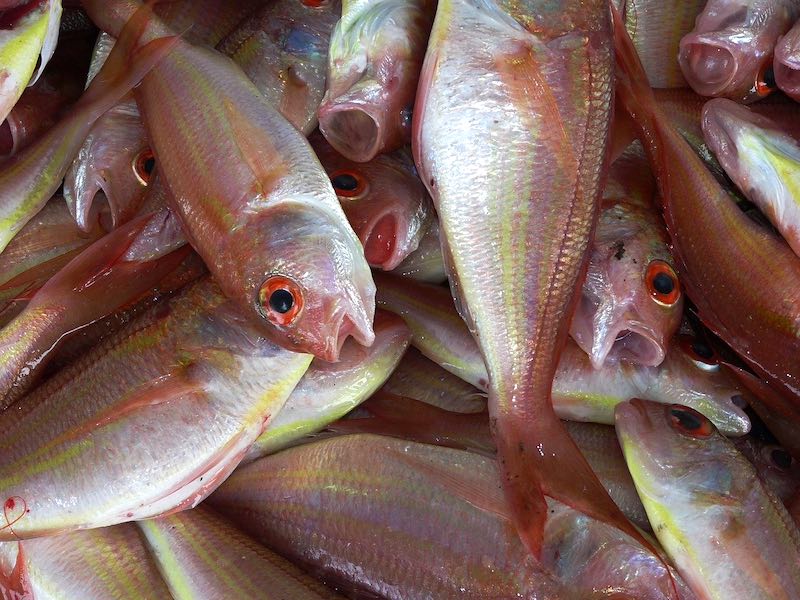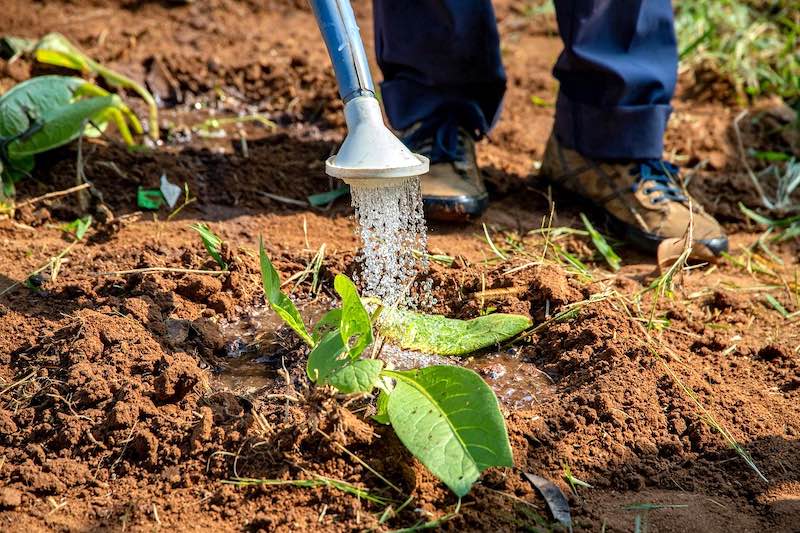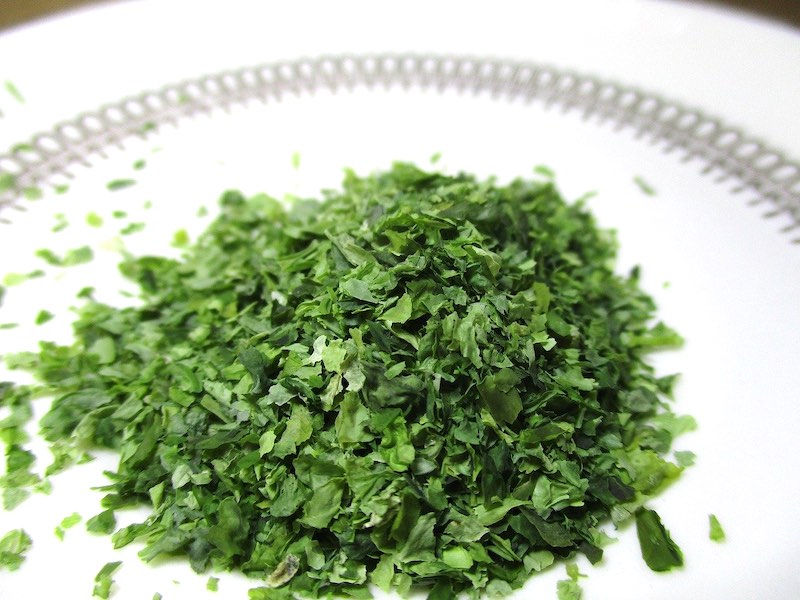You don’t have to spend hundreds of dollars on expensive soil fertilizers. There are dozens of homemade plant food recipes and ingredients you can use to boost plant growth and improve soil health.
RELATED: Homemade Fertilizer from Compost
15 Simple, Inexpensive Homemade Plant Food Recipes and Ingredients
1. Baking Soda-Ammonia Plant Food
Need a quick nitrogen-boosting homemade plant fertilizer? Try out this simple salt, baking soda, and ammonia mixture.
As long as you have the ingredients, you can whip up one of these in just an hour. That already includes the time it takes to dissolve the solid ingredients.
What you'll need:
- 1 tsp. baking soda
- 1/2 tsp. ammonia
- 1 Tbsp. Epsom salt
- 1 gallon water
Instructions:
- Mix all the ingredients in an old plastic jug, shake well, and then let sit for at least an hour. This should be enough time for the salt and baking soda to dissolve.
- Then, carefully pour the mixture on the garden soil. Make sure to pour near plant roots to give plants a better chance to absorb the nutrients.
2. Diluted Fish Emulsion Soil Fertilizer

This homemade plant food is made of random fish parts and guts. Basically, the idea is to mix the fish with water and let the mixture ferment for a few weeks.
It's highly nutritious and will give your soil all the nitrogen, calcium, and other minerals it needs to keep your plants growing strong and healthy.
What you'll need:
- 55-gallon drum
- Large amounts of fish waste
- Clean water
Instructions:
- Fill about 1/3 of the drum with one part fish waste and two parts water. Let the mixture sit for one day.
- Afterward, fill the drum with clean water, cover loosely with a lid, and then let the mixture ferment for around three weeks.
- Once the mixture is ready, spread the homemade plant food on your garden soil. Generally, you should strive to pour at least three gallons of fish emulation waste for every 100 square feet.
3. Tea-Steeped Urine-Dried Leaves Mixture

This is a homemade simple tea-steeped food plant made of grass clippings, weed, and green leaves. It takes three days for the mixture to fully ferment.
What you’ll need:
- 2 cups urine
- 1/4 cup Epsom salt
- 2 cups wood ash
- Pile of grass clippings, weeds, and green leaves
Instructions:
- Mix the wood ash, urine, and Epsom salt in the large bucket.
- Stir the ingredients together and then fill the rest of the buck with weeds, pruned green leaves, and grass clippings.
- Pour water into the bucket until the mixture nears the brim.
- Let the mixture steep for three days.
- Afterward, strain the mixture into empty liter bottles.
- Dilute the tea mixture with water and transfer to a watering can.
4. Instant Homemade Plant Food Mixture
This homemade fertilizer mixture takes less than an hour to make. It's the perfect option for gardeners who hate steeping and fermenting their DIY fertilizer.
What you'll need:
- 1 tsp. baking powder
- 1 gallon milk
- 3 tsp. blackstrap molasses
- 1 cup crushed egg shells
- 3 tsp. powdered iced tea
- 1/4 cup bone scraps
- 3 Tbsp. hydrogen peroxide
- Banana peels
- Large empty jug
Instructions:
- Mix all the ingredients in the large empty jug, fill the remainder with water, and then let the mixture sit for 30 minutes.
- Afterward, your homemade plant food is ready to be sprinkled all over your garden.
5. Seaweed-Steeped Plant Food Mixture

What makes seaweed an effective plant food is mannitol. It's a compound that boosts your plants' abilities to absorb the nutrients and minerals in the soil.
What you'll need:
- 8 cups seaweed, chopped
- 5-gallon bucket
- Water
Instructions:
- Fill the bucket with water and throw in the seaweed.
- Cover the bucket loosely with a lid then let the mixture steep for around three weeks.
- Strain in empty liter bottles then pour the plant food mixture on your plants.
Other Household Items You Can Add to Your Homemade Plant Food
1. Coffee Grounds

Don’t throw out your used coffee grounds! They are rich in minerals such as phosphoric acid, potash, and nitrogen, all of which are essential soil nutrients.
Scatter them on the soil and mulch around the plants. They work best on acidic plants such as evergreens, blueberries, avocados, camellias, roses, and azaleas.
Pro Tip: Coffee grounds and eggshells for plants are a winning combination.
2. Green Tea
Green tea contains nutrients that stimulate oxygenation to improve the root system of your garden.
Steep one tea bag in a gallon of water and then use the mixture to water your plants. Do this no more than once a month.
RELATED: Straw Bale Garden Tips
3. Blackstrap Molasses
Blackstrap molasses is rich in soil-boosting nutrients such as manganese, calcium, potash, sulfur, iron, carbon, magnesium, and copper. They combine well with homemade plant food ingredients such as Epsom salt and green tea.
4. Gelatin
Store-bought gelatin isn’t just a sweet dessert, it’s also a great source of nitrogen!
Mix one package with one part hot water and three parts cold water. Then, dump the mixture around your garden plants. Do no more than once a month.
5. Banana Peels
Bananas are an excellent source of potassium. It’s a very important mineral that helps flowers such as roses bloom bigger and more colorful.
Most people just lay them on top of the soil, this is an ineffective approach. What you should do is bury the banana peels a few inches away from the flowers and plants you want to provide extra potassium to.
6. Wood Ash
If the ash is mixed with charcoal or lighter fluid, do not use them as homemade plant food. They contain toxic chemicals that will rot your plants.
Collect the wood ash from your chimney and scatter them all over your garden soil.
7. Powdered Milk
Powdered milk is an excellent source of calcium. This is best used to prep the soil you wish to plant your crops in.
Scatter the powdered milk all over the bare soil. No need to mix them in water.
8. Horse Feed
Horse feed is a great homemade plant food ingredient. They’re rich in all kinds of minerals and nutrients garden soil needs to keep plants healthy.
Plus, they’re easy to use. Just scatter them all over the bare soil and you’re good to go!
9. Egg Shells
Eggshells are rich in nitrogen and phosphoric acid. These nutrients are essential to improve soil oxygenation and plant growth.
Crush them to bits, turn them into fine powder using a coffee grinder, and then sprinkle all over your garden soil.
10. Cooking Water
Don’t throw away the water you used to cook your food! Set them aside in a clean bowl, wait for the water to cool down, and then shower all over your plants.
This is a great way to maximize the nutrients and minerals removed from your food while you were cooking them.
Check out this video by PLANTERINA on how to make zero-waste homemade plant food:
Do not use your homemade plant food the moment you finish mixing the ingredients. Test a small portion of it first to ensure it isn’t harmful.
Squeeze a few milliliters of the finished product on a small patch of soil in your garden and see how the soil reacts. This is especially important for recipes that make use of items such as ammonia and hydrogen peroxide.
What do you use for your homemade plant food? Post your gardening hacks in the comments section below!
Fellow homesteaders, do you want to help others learn from your journey by becoming one of our original contributors? Write for us!
Up Next:


Very good article
very good